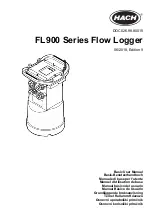
2
2 Getting Started
Section 2: Getting Started
In this section, we will discuss many topics in relatively few pages so
that you can “get on board” fast. For this reason, some of the more
sophisticated concepts are greatly simplified or reserved for later sec-
tions.
After working through this section, you’ll have enough background
to try things on your own, which is an excellent way to attain a good
working knowledge of your instrument.
And don’t worry, you can’t
damage the HERMIT 2000 or its accessories with any keyboard
operation.
The Keyboard
How to Wake the HERMIT 2000
The HERMIT 2000 uses a technique referred to as “sleeping” to mini-
mize power consumption, achieving a battery life measured in years
instead of months. Your HERMIT 2000 is naturally narcoleptic, fall-
ing asleep whenever there is no immediate task for the instrument
to perform. When the instrument is asleep, only its internal clock
and keyboard circuits remain active (the data storage memory is
non-volatile and requires no power to retain stored information).
The HERMIT 2000 will wake up when its internal clock indicates
the time for a data point or when you press a key on the front panel.
The sleep mode is recognized by a
blank display.
Lightly press and release any key. The
HERMIT 2000 will wake and respond
with
READY
in about 2 seconds.
The HERMIT 2000 will remain
awake as long as you are using the keyboard. If you have not pressed
a key for about 60 seconds, the instrument will go back to sleep and
the display will go blank.
READY







































